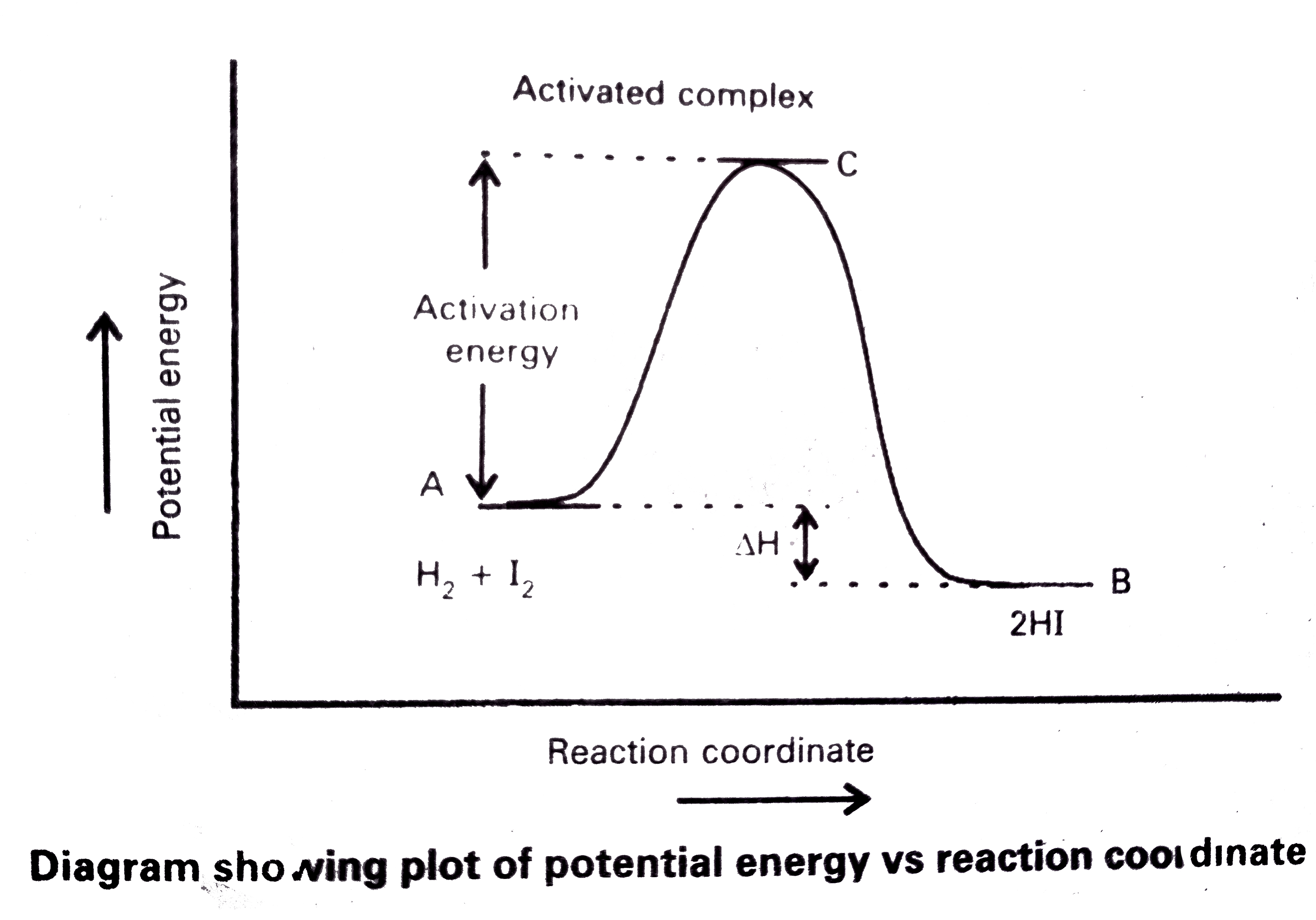Explain the terms
a) Activation energy
b) Collision frequency (Z)
c) Probability factor (P) with respect to Arrhenius equation. Solution in Telugu
a) Activation Energy, The energy required to for an intermediate called activated complex (C ) during a chemical reaction is called activatin energy.

b) Collision frequency : The number of collisions per second per unit volume of the reaction mixture is called collision frequency (Z). For a bimolecular elementary reactions
products
Rate
c) Probability factor (P) with respect to Arrhenius equation : To account for effective collisions a factor p called to probability factor or steric factor is introduced.
Rate
Topper's Solved these Questions
- ELECTROCHEMISTRY & CHEMICAL KINETICSBOOK - VIKRAM PUBLICATION ( ANDHRA PUBLICATION)CHAPTER - ELECTROCHEMISTRY & CHEMICAL KINETICSEXERCISE - LONG ANSWER QUESTIONS
12 Videos
- ELECTROCHEMISTRY & CHEMICAL KINETICSBOOK - VIKRAM PUBLICATION ( ANDHRA PUBLICATION)CHAPTER - ELECTROCHEMISTRY & CHEMICAL KINETICSEXERCISE - INTEXT QUESTIONS
24 Videos
- ELECTROCHEMISTRY & CHEMICAL KINETICSBOOK - VIKRAM PUBLICATION ( ANDHRA PUBLICATION)CHAPTER - ELECTROCHEMISTRY & CHEMICAL KINETICSEXERCISE - VERY SHORT ANSWER QUESTIONS
63 Videos
- D AND F- BLOCK ELEMENTS AND CO-ORDINATION COMPOUNDS BOOK - VIKRAM PUBLICATION ( ANDHRA PUBLICATION)CHAPTER - D AND F- BLOCK ELEMENTS AND CO-ORDINATION COMPOUNDS EXERCISE - INTEXT QUESTIONS
33 Videos
- GENERAL PRINCIPLES OF MMETALLURGYBOOK - VIKRAM PUBLICATION ( ANDHRA PUBLICATION)CHAPTER - GENERAL PRINCIPLES OF MMETALLURGYEXERCISE - DAM SURE SAQ
1 Videos
Similar Questions
What are electro chemical cells ? How are they constructed ? Explain the working of the different types of galvanic cells ?
View SolutionHow would you determine the standard electrode potential of the system Mg2+/Mg?
View SolutionWhat is a galvanic cell or a valtaic cell ? Give one example.
View SolutionSilver atom has completely filled d-orbitals (4d10) in its ground state. How can you say that it is a transition element ?
View SolutionGive examples to differentiate roasting and calcination.
View SolutionIn Arrhenius equation for activation energy, k=Ae−Ea/RT, A represents the following :
(1) pre-exponential factor
(2) Frequency factor
(3) Arrhenius factor
(4) Collision factor and frequency
The correct anwer is :
View SolutionConsider the given plots for a reaction obeying Arrhenius equation (0^(@)CltTlt300^(@)C) : (k and E_(a) are rate constant and activation energy, respectively)
View SolutionArrhenius equation k=Ae^(-E_(a)//RT) If the activation energy of the reaction is found to be equal to RT then,
View SolutionA : Arrhenius parameter
(A) = P (steric factor) × z (collision frequency)
R : On increasing temperature , the value of A increases.
View SolutionArrhenius equation k=Ae−Ea/RT If the activation energy of the reaction is found to be equal to RT, then [given : 1e=0.3679]
View SolutionWrite Arrhenius equation and explains the terms involved.
View SolutionThe following values for the first order rate constant were obtained for a certain reaction :
Temp (∘C)k×10−5 sec−1253.463513.50
Calculate the Arrhenius frequency factor and activation energy 'Ea'.
View SolutionWrite the Arrhenius equation and explain the terms.
View SolutionThe following values for the first order rate constant were obtained for a certain reaction : {:("Temp "(""^(@)C),kxx10^(-5)" sec"^(-1)),(25,3.46),(35,13.50):} Calculate the Arrhenius frequency factor and activation energy 'E_(a)' .
View SolutionDerive the relationship between half-life period and rate constant for a first order reaction.
View Solution
